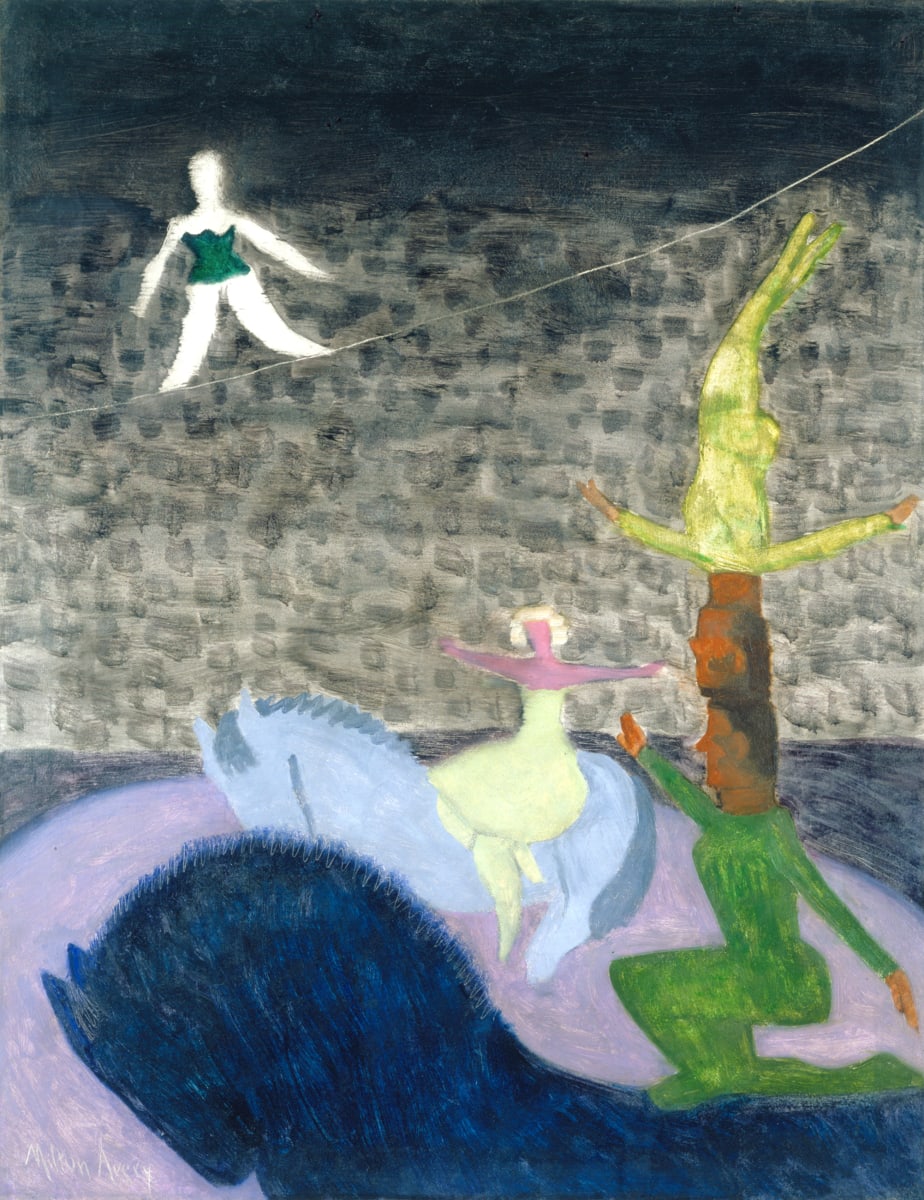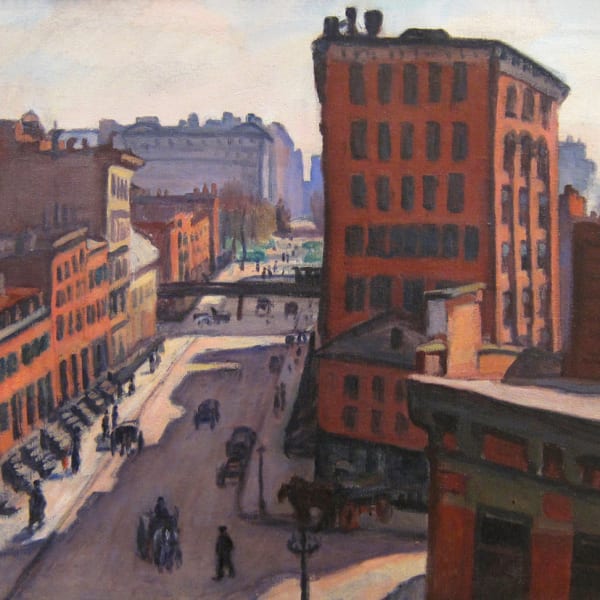
His unique style, often depicting scenes from the natural world and images of the artist’s family, has become part of the canon of modernism.
Born in Sand Bank (now Altmar), New York, March 7, 1885, Milton Clark Avery began his artistic during his teenage years and painted almost daily until two years before his death in 1965. He left school at the age of sixteen to work at the Hartford Machine and Screw Company and the Underwood Manufacturing Company in Connecticut assembling machine parts to support his family. Sometime after his father died in 1905, Avery began taking art classes at the Connecticut League of Art Students in Hartford and studied there on a part-time basis until 1918. Between 1917 and 1925, he was employed as a file clerk for the Travelers Insurance Company and as a construction worker. He continued his studies in art at the School of the Art Society of Hartford and eventually became a member of the Connecticut Academy of the Fine Arts. Soon after meeting Sally Michel on a summer trip to Gloucester, Massachusetts, Avery followed her to New York City and the couple married in 1926.
Born in Sand Bank (now Altmar), New York, March 7, 1885, Milton Clark Avery began his artistic during his teenage years and painted almost daily until two years before his death in 1965. He left school at the age of sixteen to work at the Hartford Machine and Screw Company and the Underwood Manufacturing Company in Connecticut assembling machine parts to support his family. Sometime after his father died in 1905, Avery began taking art classes at the Connecticut League of Art Students in Hartford and studied there on a part-time basis until 1918. Between 1917 and 1925, he was employed as a file clerk for the Travelers Insurance Company and as a construction worker. He continued his studies in art at the School of the Art Society of Hartford and eventually became a member of the Connecticut Academy of the Fine Arts. Soon after meeting Sally Michel on a summer trip to Gloucester, Massachusetts, Avery followed her to New York City and the couple married in 1926.
The Averys quickly became part of the lively and exciting art scene in Manhattan. Milton enrolled in classes at the Art Students League and frequented sketch classes there until 1938. He first exhibited at the Wadsworth Atheneum’s Fifth Annual Exhibition of Oil Paintings and Sculpture in 1915, but soon after his arrival in New York he began showing regularly. His work was included in the Society of Independent Artists exhibition in 1927 and the following year fellow artist Bernard Karifol selected two of his paintings for a group show at the Opportunity Gallery in New York, which included works by Mark Rothko, with whom Avery became especially close and who introduced him to Barnett Newman and Adolph Gottlieb. He also befriended Marsden Hartley. Beginning in 1932, the Averys began summering in Gloucester with Rothko, Gottlieb, and Newman, and in the same year, his only child, daughter March, was born.
From the late 1920s to the 1940s, Avery’s reputation grew at a rapid pace. He won numerous awards and as his works began to be acquired by collectors such as Duncan Phillips and Albert Barnes. From 1935 to 1943, Avery was represented by Valentine Gallery and from 1943 to 1950 by Paul Rosenfeld & Company Gallery. He had his first solo museum exhibition at the Phillips Memorial Gallery in Washington, D.C. in 1944 and his first retrospective showing at the Durand-Ruel Galleries in 1947. In the late 1940s, Avery began to experiment with dry point and monotype prints. He also ended his affiliation with Rosenberg, who sold his inventory of Avery paintings to Roy Neuberger. In the late 1940s, Avery suffered his first major heart attack, an illness from which he never completely recovered.
The period from 1950 until 1963 was a time of transitions and change for Avery. In 1951, he joined the newly established Grace Borgenicht Gallery in New York. The following year, he traveled to Europe for the first time and visited London, Paris, and the French Rivera. He spent the summer months during the 1950s at various art colonies including The MacDowell Colony in Peterborough, New Hampshire, the Yaddo Art Colony near Saratoga Springs, New York, and Provincetown, Massachusetts. He continued to paint, despite failing health, but suffered a second heart attack in 1960, which truly incapacitated him. He was honored with two retrospective exhibitions during this time, one at The Baltimore Museum of Art in 1952 and another at The Whitney Museum of American Art in 1960. In 1963, Milton Avery painted his last work and died two years later, January 3, 1965 in New York City.
Avery’s style evolved over time from Impressionism to modernism and by the 1930s he had developed his signature style of combining abstraction with representational forms to create a unified whole. In his mature paintings, he flattened form and applied intense colors in large unbroken areas. This unique style, often depicting scenes from the natural world and images of the artist’s family, has become part of the canon of modernism.












